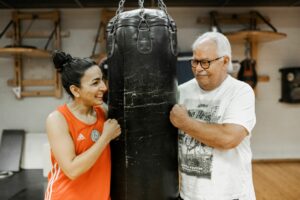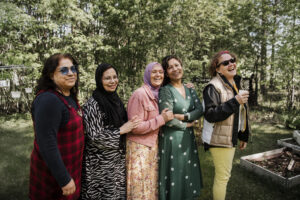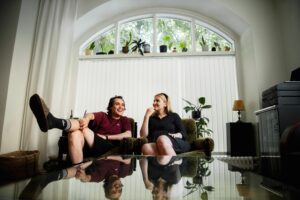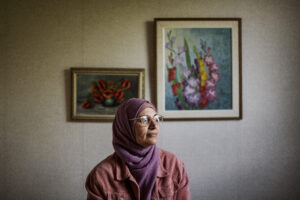We are standing in front of a grey concrete apartment building. We open one of the doors to the building, walk through another door, and take the stairs down to the basement floor. Behind a wooden door, there is a dimly light, atmospheric studio, just one of the many different spaces in the building. The studio is full of interesting details: paintings, African masks, a piano with a framed photograph and some candles on top. In the middle of the room there is an armchair, a sofa and some kind of table. A closer look reveals that there are three desks in the space, and each of them is surrounded by different kind of art.
This is Yvapurü Studio, shared by artists Yvapurü Samaniego, Aryan Vandi and Miguel Diaz.
YVAPURÜ SAMANIEGO
Yvapurü Samaniego, a multidisciplinary artist, brought the three artists under the same roof. Paraguayan Yvapurü first came to Finland 11 years ago on holiday, but relocated here two years later for love. Before this, he lived in New York and Barcelona for several years.
“All kinds of weird things happened during my first trip here: my ex-girlfriend’s father was paralyzed, an acquaintance of mine passed away, and a train I was on crashed to a station building. At the time, I said I would never move to Finland, but here we are,” Yvapurü laughs.
Before coming to Finland, Yvapurü studied art in Paraguay and photography in New York. Life also took him to Barcelona, where he lived for many years doing various projects and organising art exhibitions: he describes himself as a drawer, painter, sculptor, photographer and performer. In Finland, he has worked in many different art residencies and acted as an art educator, curator and artistic producer in various projects.
“I noticed that it was easy for me to find work in Finland. People here are very practical, and asked me to get involved in many things. If there is a problem, I will review the situation and then offer my solution. I would say I am a versatile artist who can do just about anything with these,” Yvapurü grins and shows his hands.

Yvapurü had his own studio in Barcelona for years, and after arriving in Finland, he missed having his own space. Through his networks, he learnt about the building at Nilsiänkatu 10, which was full of different spaces.
“A man who had invited me to join an art project owned some of the premises here, and he told me there were vacancies. So I decided to rent the studio in spring 2021. I feel free here, and in many ways safer than in my own home. There is a picture of me taken 11 years ago sitting on an abandoned sofa in front of a door – and it just so happens it’s the door to my studio.”
Yvapurü says he has been given the opportunity to demonstrate his versatile skills in Finland and be involved in various projects. He views his art and the people he meets in the art circles as kind of a bridge to society. He is now determined to do the same for other immigrants as well as Finnish artists: he offers and attempts to create for them different opportunities in various communities and projects.
“I am involved in various art collectives, such as the Council of Global Art Point, Kulttuurikeskus Ninho and Culture for All, which aim to produce different art platforms and opportunities and to bring people together, as well as to encourage debate and add to people’s awareness of art and its possibilities in Finland. I also established a global art movement, Pehmeä Vandalismi. I feel it is very important to create these kinds of opportunities for artists moving here,” Yvapurü says.
Although Yvapurü has managed to build a life that suits him thanks his encounters, networks and own initiative, integration has not been a bed of roses for him. He struggled to get a residence permit, but after living in Europe for more than a decade and proving that he was employed and actively involved in voluntary work, Yvapurü eventually gained his Finnish citizenship.
“Finland is the opposite of most of the other places where I have lived. I chose this country as my home, and now my daughter, who also dreams of a career as an artist, moved here too with her husband. I intend to carry along the same path: making versatile art and bringing together immigrants and Finns. This is why I also chose to open my studio to two other artists.”
ARYAN VANDI
One of the desks at the studio belongs to Aryan Vandi. In autumn 2021, Aryan, who comes from Iran, visited an art gallery in the centre of Helsinki and met Yvapurü, who gave him a tour of the gallery. During the tour, Aryan learnt that the artwork at the gallery was made by members of the Pehmeä Vandalismi collective and that Yvapurü was the founder of the collective. Aryan’s own art was very similar, so he decided to join the group of artists.
“Through the collective, I have met so many interesting people and made contacts that have helped me get involved in various projects. At the same time, I became good friends with Yvapurü, and when he learnt that I was looking for a working space, he suggested that I join them at the studio,” Aryan says.
Six months earlier, in February 2021, Aryan had arrived in Finland to study Nordic Visual Studies and Art Education at Aalto University. The COVID-19 pandemic forced him to complete his first year of studies as distance learning from Teheran. Aryan says that Finland has offered him opportunities in terms of both his studies and work.
“I feel that I have been able to express myself through both my studies and my work here, and the people I have met have helped me in many respects. In fact, my university instructor helped me find my current job: I work as an after-school art teacher at the European School of Helsinki.”
Aryan considers himself lucky to have been able to continue his life in Finland almost in the same way as in Iran: in addition to his studies and teaching, he works on various projects as a freelance illustrator and graphic designer.
At the studio, he mainly works on his own art and prepares it for sale or for art festivals where he is involved. Aryan feels that his studies, work as a teacher and his career as an artist are smoothly intertwined: all of them support him in his growth and self-exploration as an artist.
According to Aryan, his encounters with Yvapurü and other people have helped him adapt to a new country. He feels that meeting people who share your interests and with whom you can share ideas and implement them makes your daily life easier and gives you a certain peace of mind. The same is true wherever you are: in your own country or somewhere you have just arrived.
“Meeting like-minded people makes you feel safe and at home.”
Although moving to a new country and getting used to communicating in a foreign language felt challenging at times, and he was not able to find work at first because of the language barrier, Aryan feels that the pieces in his life have slipped in place quite easily. Aryan plans to stay in Finland after graduating, to concentrate on making his art and study the Finnish language, which he believes will open many doors for him.
“At the moment, my life is good in many ways and feels safe: both my professional and personal life are full of great people. There is always someone to turn to for help. I would say that I am on my way to becoming part of the Finnish society.”

MIKEL BASQUIAT
Man working at the third table is Miguel Diaz, who also goes by his artistic name Mikel Baskiat. He was brought to Finland from Spain by love four years ago. In his home country, Mikel worked as a barber and has been a visual artist for 23 years – producing both in drawing and painting, including oil and acrylic paints.
He found his current studio through a Facebook artist group. Yvapurü came to buy art from Mikel on the wall of the hair salon where he also works. Men chatted and Yvapurü tipped him about a table that was available. Since October 2021, Mikel has been making art under the roof of this studio.
“You can find me here two or three times a week. I usually arrive at the studio first thing in the morning to work on my various projects; preparing commissioned pieces and making my own experimental art.”
Mikel says art is a way of life for him – his life is largely built around it and he wants it to remain so in the future. Art has brought interesting encounters into Mikel’s life, and he sees it as building bridges and connections between him and other people. The art exhibitions they put on together and the audiences that come to them are an opportunity to interact with a wide range of people.

For Mikel, adjusting to a new country was difficult at first; everything was new, and he never felt at home. Gradually, however, everyday life began to take shape, and one day Mikel realised that he had two homes. The greetings from neighbors, the familiar face of the bus driver and other little things helped him settle in.
“Day by day, life starts to go better and at its own pace. My own background and my past life go with me, but they are no longer the first things on my mind. Integration is like cooking: you have to be patient, by cooking slowly and carefully the result is always better and tastier,” laughs Mikel.
In the future, Mikel plans to continue making art, taking one day at a time. He believes that collaboration with other artists will continue to bear fruit in the future. Nilsiänkatu 10 is a good base for that.
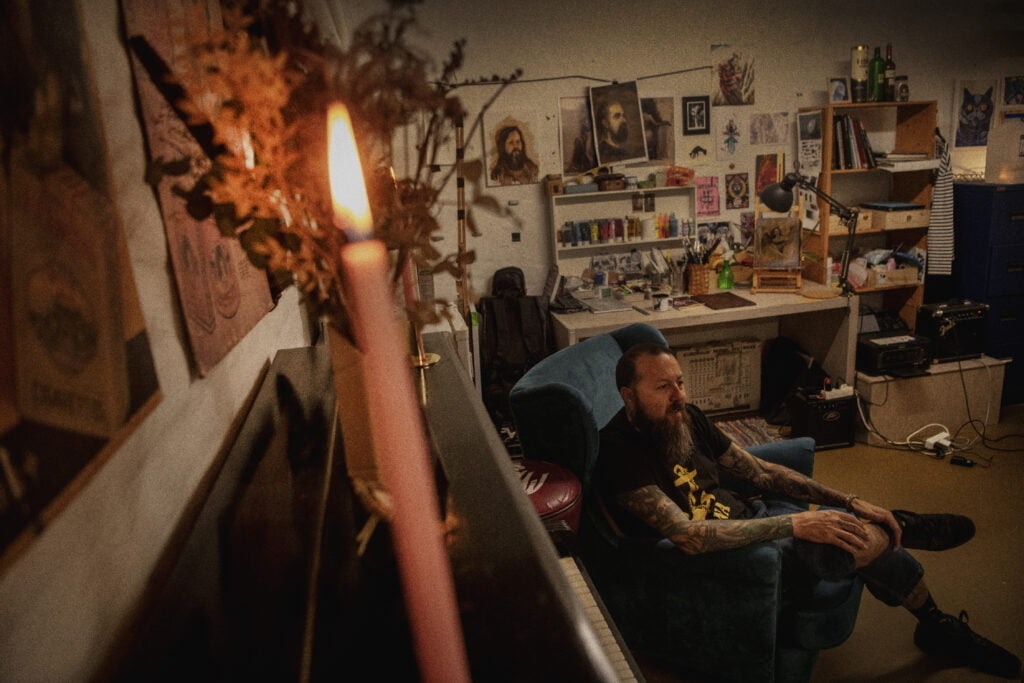
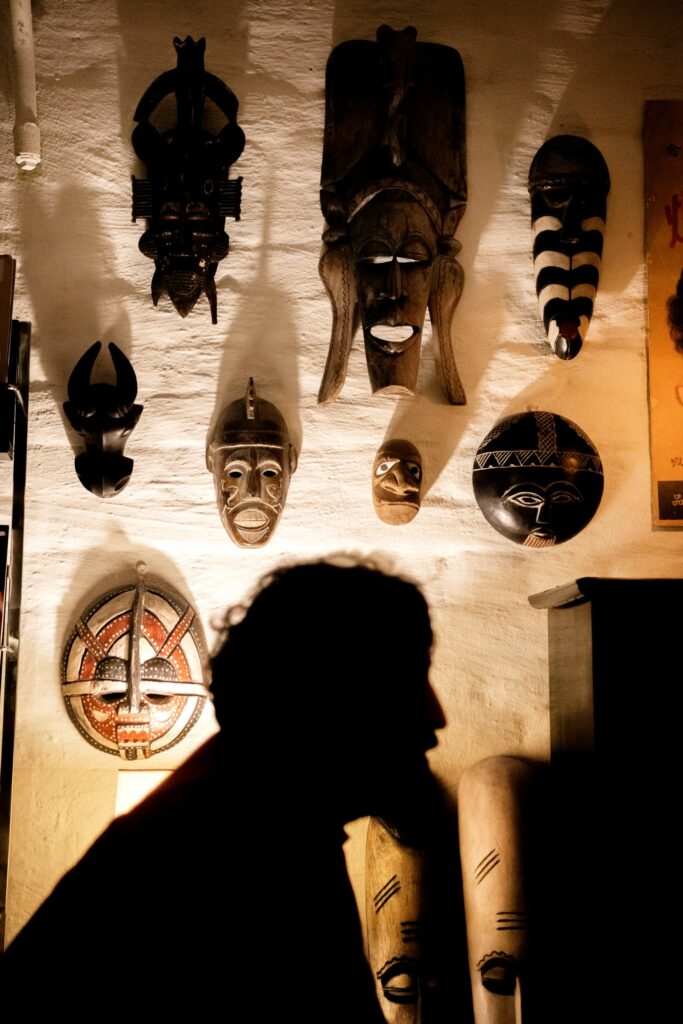
Friendship and artistic peer support
The three artists take a seat on the sofas and chairs in the middle of the studio to talk about what the studio means to them. All three agree that the studio in itself is a safe and free space where they can delve into their own mindscapes, unleash their creativity and do whatever they want. According to Mikel, it’s like a gym for an athlete or a practice for a football player before heading to a match: the studio lends a part of itself to the artworks that will then be displayed at exhibitions. In addition to being a place of creativity and work space, the studio also serves as a venue for events and gatherings with other artists and the public.
“We organise open days and music events here. Last winter, we also had a Christmas market, and to our surprise, more than 200 people turned up with only very little advertisement. Visitors explored our art, we met different kinds of people and came up with lots of new ideas. Such encounters help us create new networks,” Yvapurü says.
The three artists are often at the studio at slightly different times, but when they get together, ideas and thoughts are exchanged on the go. In addition to their friendships, artistic peer support has been important for them in their new home country.
“Working here with Yvapurü and Mikel has given me lots of ideas and perspective on my art and career. You never know what kinds of interesting projects our discussions take us to,” Aryan sums up.
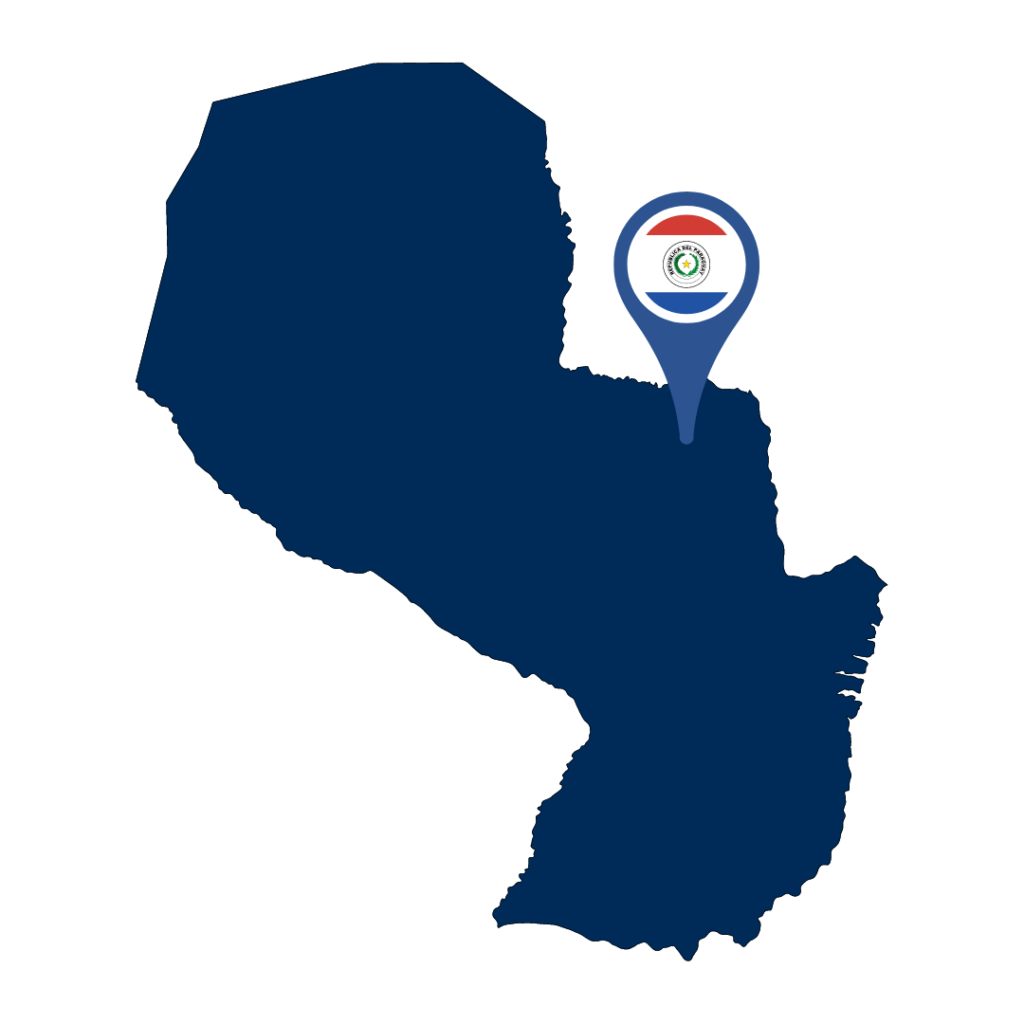
MIGRATION FACTS ABOUT PARAGUAY
Despite the efforts of the Paraguayan government since the late 19th century to attract settlers from Europe and North America, immigration to Paraguay has been 100 times lower than to neighboring countries Argentina and Brazil. However, over the last decade, Paraguay has seen a new influx of migrants looking for work. In particularly Lebanese, Chinese and Korean workers have come to work for Brazilian companies operating in Paraguay. However, the number of foreigners in Paraguay remains still small.
Emigration from Paraguay, especially to the United States and Spain, has been high due to factors such as political instability, dictatorial regimes and high unemployment. In 2010, on estimate almost 12% of the country’s population, so 777 000 Paraguayans, were living abroad. Source: IOM
MIGRATION FACTS ABOUT IRAN
Due to its geographical location and political system, Iran is a major country of origin, transit, and destination for immigrants. Bordering Afghanistan, millions of Afghans have fled to Iran over the last 40 years. There are currently around 800,000 registered refugees in Iran, the majority of whom are from Afghanistan. The number of unregistered displaced people is difficult to estimate.
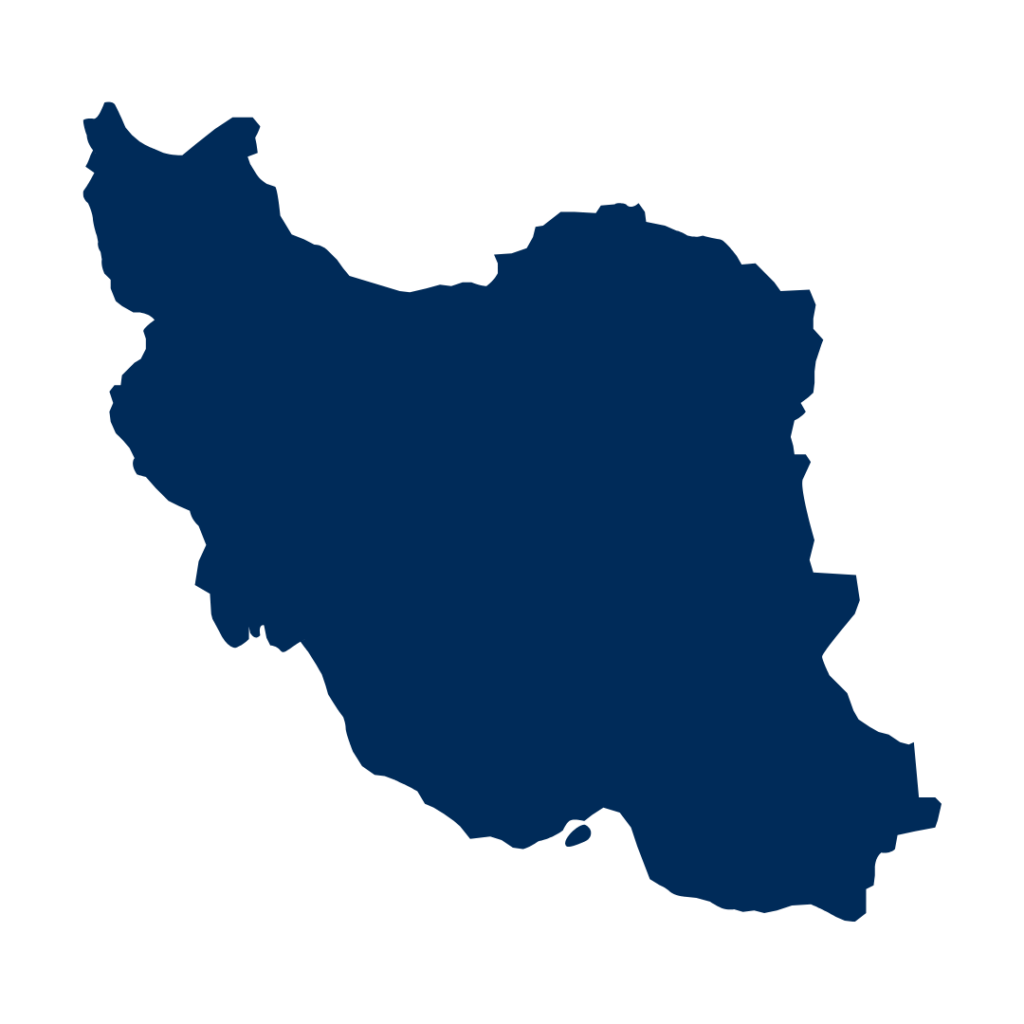
According to the country’s research institute, more than 1.8 million Iranians have emigrated from the country. Most live in the United States or in Europe. There is often talk of a severe ‘brain drain’ in Iran, where the poor economic situation and the lack of social and political freedom, especially for the highly educated, are driving the population to leave for other countries. There are around 8 500 Iranians living in Finland.
Sources: Statistics Finland, UNHCR, Migration Policy Institute
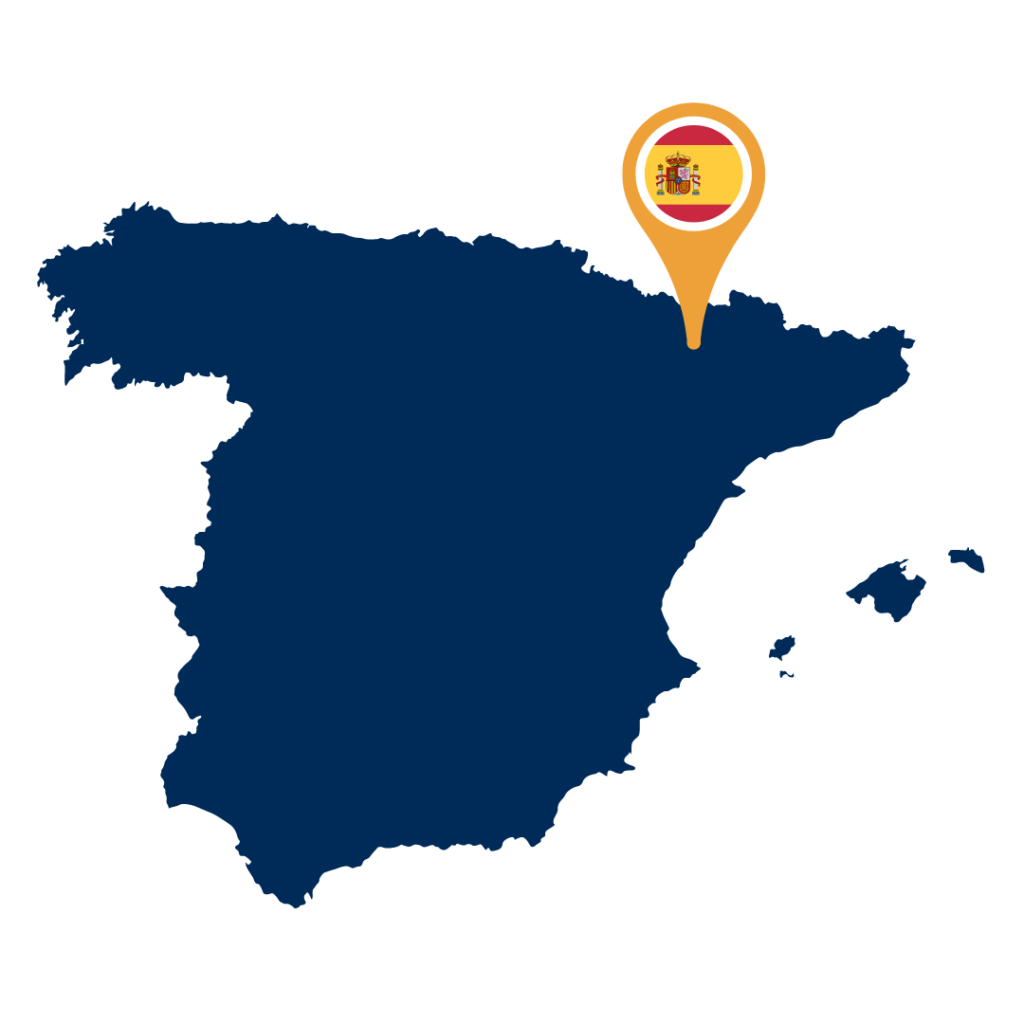
MIGRATION FACTS ABOUT SPAIN
Historically, Spain is a country of emigration. For example, in the last 14 years of Francisco Franco’s dictatorship between 1962 and 1976, almost 2 million people emigrated to France, West Germany and Switzerland. Since the early 1980s, with the development of the Spanish economy has attracted new residents. Between 1998 and 2008, the number of foreigners living in Spain rose from 1 % to 13 %. In recent years, Spain has received around half a million foreigners a year, most of whom come from South America and Africa.
Source: Migration Policy Institute
The Whole Picture – stories behind immigration project addresses questions of belonging to Finnish society and the importance of interpersonal relationships for integration in a new country. The project also opens the global situation of immigration. Through a photo exhibition and an online campaign, the project asks, do we see individuals behind the immigration statistics and invites you to explore six different humane stories. The photos and interviews have been collected during the summer and autumn of 2022.





